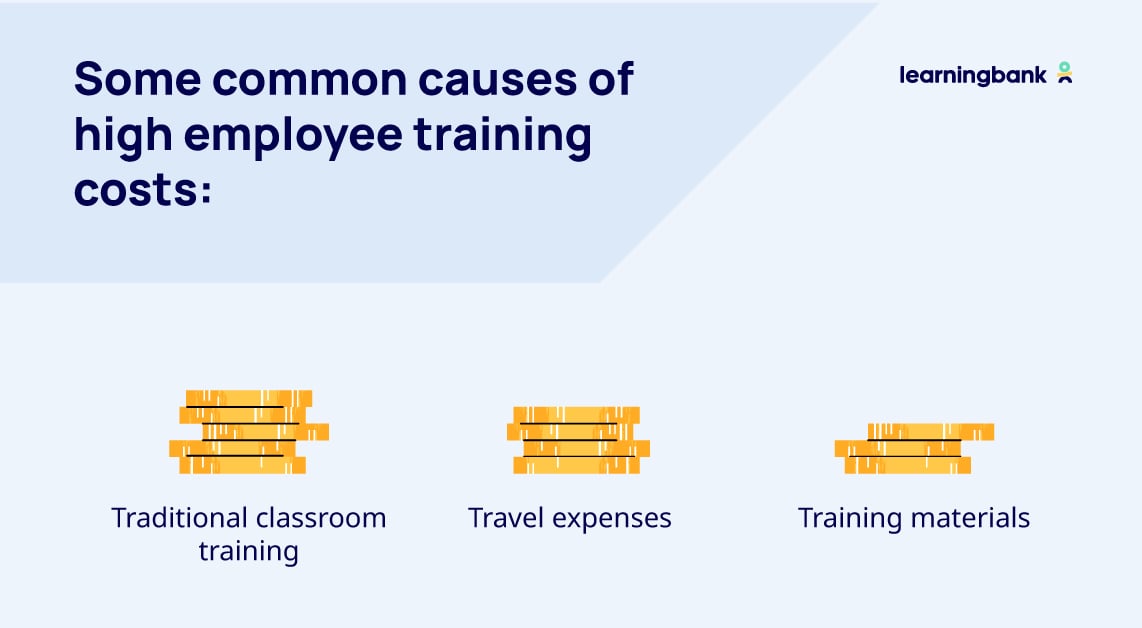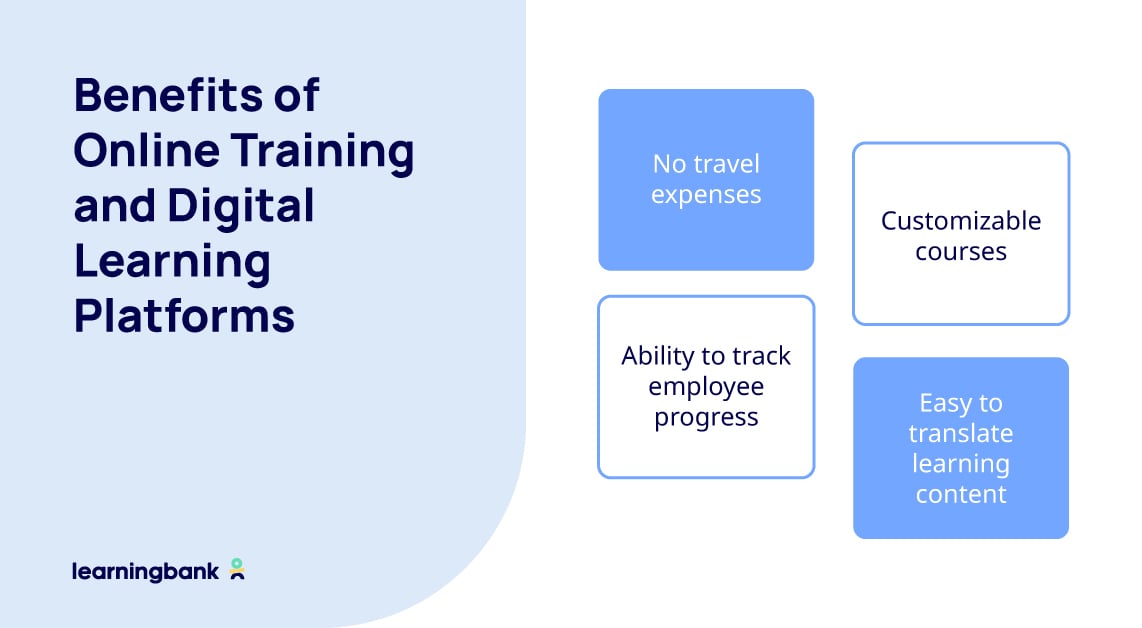Do you struggle to make your training budget cover everything you need for your employee training? There are so many areas to cover so, many employees to train, onboard, and upskill. You do not want to cut down on quality and your learning outcomes still need to be met, so how can you reduce the employee training cost without compromising the quality?
Well, there are practical ways to reduce employee training costs while maintaining the quality of training. Keep on reading and you'll find some concrete examples.
Want to jump straight to the tips here? Click here.
Identify the Causes of High Employee Training Costs
First and foremost, it's essential to understand the causes of high employee training costs. Once you have identified the primary causes and understand what drives up training costs, you can take action to mitigate them.
Some common causes of high employee training costs:
- Traditional classroom training: Traditional classroom training can be expensive. It requires a physical space to conduct the training, which incurs rental costs, sometimes furniture and equipment. You also need to count the time taken from the employees not working as an expense.
- Travel expenses: When conducting training in a physical location, travel expenses, such as flights, other transportation, and accommodation, can be quite significant. These expenses can add up, especially if you have employees working in multiple locations.
- Training Materials: Providing training and learning materials to employees can be costly, especially if the materials need to be printed and distributed.

4 Tips for Reducing Employee Training Costs
Here are some practical tips on how to reduce employee training costs:
- Go digital. By making your employee training digital, it will be easy to streamline, update, share, and reuse. And it gets easy to scale. This way, once you've put a lot of effort into creating really great training, you will be able to reuse it for new employees and as your company scale. Hence, saving money.
Digital training also allows you to give your employees microlearning. That way you will reduce costs for the company as you won't need to take your employees off work for full, or half training days. - Implement a blended learning approach. Blended learning combines digital and classroom training to provide employees with a flexible and engaging learning experience. This approach can reduce training costs by eliminating the need for full-time trainers, and reducing travel expenses.
By incorporating a variety of learning formats, such as videos, gamification, and live events, you can provide your employees with a personalized learning experience that meets their individual needs and learning style. - Use free or low-cost training resources. There are plenty of free or low-cost training resources available online. HR and L&D professionals can use these resources to supplement their training programs, which can help reduce costs.
You can find free courses, webinars, and even podcasts on various topics that are relevant to your industry. By curating a library of free or low-cost resources, you can provide your employees with access to high-quality training materials without breaking the bank. - Use internal competency. External competency can be great, but usually very costly. Often we start looking for trainers and teachers externally. Challenge it and look inwards first.
Maybe you have the expertise within your company, and you just didn't see it simply because you didn't look there. So before looking outside for knowledge, see what you have at home.
Reduce Costs Without Sacrificing Quality
Reducing employee training costs should not come at the expense of the quality of the training. While it's important to be mindful of expenses, ensuring that employees receive high-quality training that equips them with the necessary skills and knowledge is equally crucial.
It's all about finding the right balance between cost and quality. Learning platforms, or learning management systems, can often provide cost-effective training while maintaining the quality of the training.
Incorporating interactive elements, such as videos, quizzes, and gamification, in your online training can be engaging, which can improve the effectiveness of the training.
Additionally, providing personalized learning experiences through customizable courses, blended learning, and microlearning approaches can help ensure that employees gain the necessary skills and knowledge all while reducing training costs.
Benefits of Online Training and Digital Learning Platforms
Online training is one of the best ways to reduce employee training costs. These are some of the benefits of online training and putting your training in a learning platform:
- No travel expenses: Digital online training eliminates a lot of the need for travel, which can significantly reduce training costs. Employees can access training from any location with an internet connection, which reduces travel expenses.
- Customizable courses: Digital training allows you, as an HR and L&D professional, to customize courses to meet your organization's and employees' specific needs. It makes it easy to add or remove modules, incorporate relevant examples, and even create interactive elements that make the training more engaging.
- Ability to track employee progress: A good digital learning platform also provides a way to track employee progress, which is critical to understanding whether training is effective. This helps you adjust training as needed and ensure that employees are gaining the necessary skills and knowledge.
- Easy to translate learning content. If you have employees in different regions or countries, having digital employee training also makes it easier to translate without a lot of expenses and work.
You might think, but getting translations is expensive, we say - think again! See how you can translate your learning content in a matter of seconds here. (And cheaper than using external translators!)

Do you think digital training is right for you, but still need to prove it to management? Read 5 steps on how to make a confident choice investing in digital learning.
Choose the Right Learning Platform
When it comes to reducing employee training costs, choosing the right learning platform is essential. Here are some factors to consider when selecting a learning platform:
- Ease of use: The learning platform should be easy to use for both you as an admin and your employees.
- Customization: The platform should allow you to customize courses to meet their organization's specific needs.
- Analytics: The platform should provide analytics that allows you to track employee progress and measure the effectiveness of training.
Speaking of choosing learning platforms, we have actually written an article with 4 good tips on how to find the right learning platform for your company earlier. So instead of repeating ourselves, click here to check it out. 👈🏾

